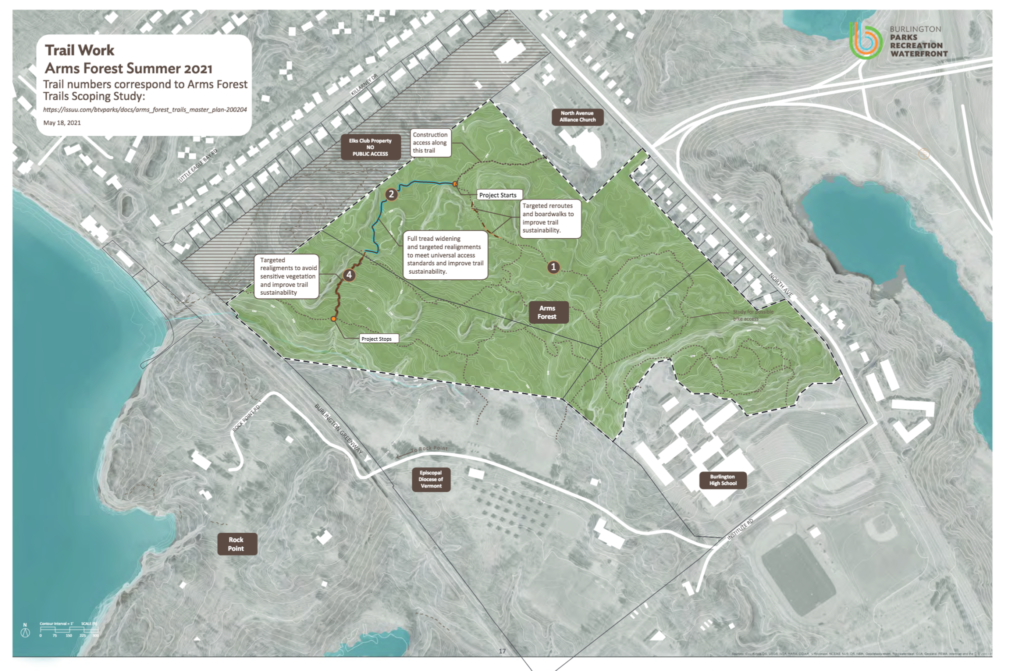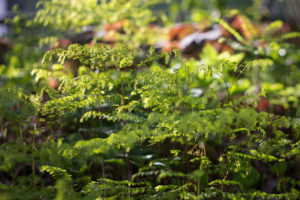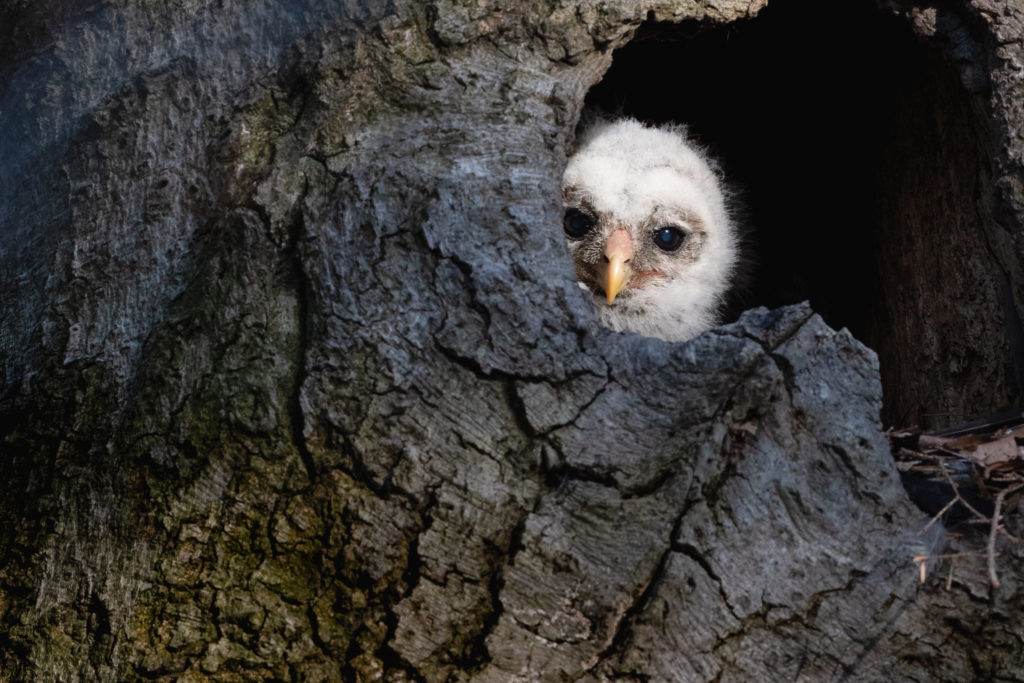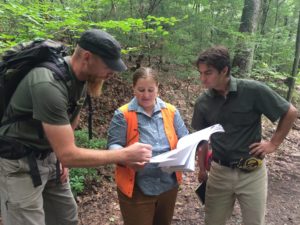Ecological and Accessible Trails Coming to Arms Forest
During the summer of 2021, Burlington Parks Recreation and Waterfront is working with Timber and Stone to improve the trails in Arms Forest. Phase One of the trail design emerged from a strategic planning process that included input by neighbors and other park users. In addition to protecting Arms Forest’s uniquely diverse ecology of wild plants and animals, the need for greater accessibility and more sustainable trails emerged. BPRW will also use language and signage to encourage users to stay on the trails and protect the ecology.

“With the newly designed trails, our hope is that the trails will last and the overall forest will beautiful and diverse into the future. Part of this work includes closing some trails, especially on the rocky outcrops,” said Dan Cahill, BPRW Land Steward.
Arms Forest is one of the most ecologically diverse natural areas in the City with two state significant natural communities that have an intact herb layer, including a wide diversity of wildflowers. In part. the plant diversity is due to past and present land use.

“Prior to being a conserved public forest, the land of Arms Forest was a night pasture for livestock for the Arms family dairy farm. So the land wasn’t fully cleared or plowed. Now, how it is situated in the City landscape and the fact that is has regular visitors has helped keep deer browsing low on the site. So the wildflowers have flourished out here. These healthy natural communities are extremely rare and valuable, not just for Burlington but for the rest of Vermont,” said Alicia Daniel, BPRW Field Naturalist.
Wildflowers also thrive in Arms because of the calcium rich Dunham Dolostone bedrock. And other calcium loving plants like maiden hair fern, a unique and important understory plant in Arms, are found on the very edges of trail areas. Reducing the overall trail tread will help plants like this thrive. And closing the network of unofficial trails will help wildlife, like red and gray foxes and fishers have spaces to find shelter in the forest.

BPRW and Timber and Stone are carefully thinking about the rehabilitation of the trails to limit impact to the environment during their construction as well as for the long-term viability of the forest health. “We are trying to keep water off the trails and people on the trails,” said Josh Ryan, Timber and Stone.
During the pandemic, especially spring of 2020, Arms Forest saw a spike in use by visitors. Monthly visits increased fivefold in April, May and June of 2020. We have seen sustained use in these areas that has stayed 2-3 times use in the previous two years before the pandemic. Places like Arms where the ecology is so significant, need to be supported with trail adaptions like the work Timber and Stone will start this summer.

“The time, energy, resources, and creativity that has gone into the trail design process and the trail improvements is a beautiful representation of an offering to Arms Forest. As we visit this space, enjoy its beauty, and receive its gifts we hope that visitors can acknowledge and understand their ability to give offerings to the space in the form of their attention, and attunement while visiting. It is critical that we begin to understand the reciprocal nature to our individual role with spaces like Arms. We are excited to continue to enhance the space, and provide guidance and signage that helps remind and educate visitor of the ethics and needs of the space, and our role in sustaining it. Please stay on trails, consider bringing domesticated animals to other locations, and if you do have an animal with you, ensure it is leashed for the entirety of your visit,” said Dan Cahill.
read the full Arms Forest Trails Scoping Study
.
